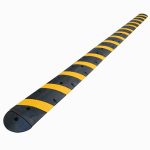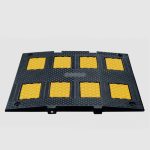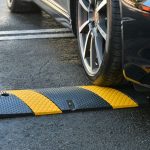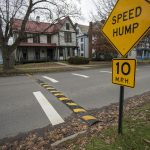Traffic safety is a top priority for communities, municipalities, and businesses alike. Whether in residential areas, school zones, or commercial parking lots, managing vehicle speed is crucial to ensuring the safety of both drivers and pedestrians. One of the most effective tools for controlling speed and enhancing safety is the speed bump. These simple yet powerful traffic calming devices are essential in reducing accidents and improving overall road safety.
What Are Speed Bumps?
Speed bumps are raised devices installed across the width of a road or parking area, designed to slow down vehicles by creating a physical obstacle. Typically, they are between 3 to 6 inches high and about 1 to 3 feet wide. When a vehicle drives over a speed bump, it experiences a jolt, which encourages the driver to reduce speed to avoid discomfort or damage to the vehicle.
Speed bumps are most effective in areas where speed limits are low and pedestrian traffic is high. They are commonly used in residential neighborhoods, school zones, parking lots, and private roads. The primary purpose of speed bumps is to reduce vehicle speed to a safe level, thereby minimizing the risk of accidents and enhancing safety for all road users.
Benefits of Speed Bumps
- Speed Reduction:
The most obvious benefit of speed bumps is their ability to reduce vehicle speed. By forcing drivers to slow down, speed bumps help prevent accidents and enhance safety in areas where fast driving poses a risk to pedestrians and other road users. - Increased Pedestrian Safety:
Speed bumps are particularly effective in areas with high pedestrian traffic, such as school zones, parks, and residential streets. By reducing vehicle speed, they give drivers more time to react to pedestrians crossing the road, thereby reducing the likelihood of accidents. - Improved Traffic Flow:
In addition to slowing down vehicles, speed bumps can also help regulate traffic flow. By controlling speed, they encourage a more orderly movement of vehicles, which can reduce congestion and improve overall traffic management. - Cost-Effective Solution:
Compared to other traffic calming measures, such as traffic lights or speed cameras, speed bumps are relatively inexpensive to install and maintain. They provide a cost-effective solution for enhancing road safety in areas where speed control is needed. - Versatility:
Speed bumps can be installed in a variety of settings, from public roads to private properties. They are versatile and can be used in different environments to address specific traffic safety concerns.
How to Choose the Right Speed Bumps
When selecting speed bumps for your area, there are several factors to consider:
- Material: Speed bumps are typically made from materials like rubber, asphalt, or concrete. Rubber speed bumps are flexible, durable, and easy to install, making them a popular choice for many applications. Asphalt and concrete speed bumps are more permanent and are ideal for high-traffic areas.
- Size and Shape: The size and shape of the speed bump will affect its effectiveness. Higher and wider speed bumps are more effective at reducing speed, but they can also be more disruptive to traffic flow. It’s important to choose a size and shape that balances safety and convenience.
- Visibility: Speed bumps should be clearly visible to drivers, especially at night or in low-light conditions. Bright colors, reflective strips, and signage can help ensure that drivers are aware of the speed bump and can slow down in time.
- Placement: The placement of speed bumps is critical to their effectiveness. They should be installed in areas where speed control is needed, such as near crosswalks, school zones, and intersections. It’s also important to ensure that speed bumps are spaced appropriately to allow for safe deceleration and acceleration.
Conclusion
Speed bumps are a vital tool in traffic management, helping to enhance safety and reduce accidents in a variety of settings. By controlling vehicle speed and encouraging responsible driving behavior, speed bumps play a crucial role in creating safer roads and communities. If you’re considering installing speed bumps in your area, explore our range of speed bumps to find the best solution for your needs.





